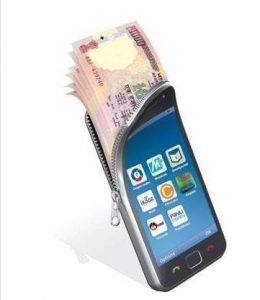
According to a Deloitte and CII study, only 52.8 percent of Indians have bank accounts as compared to a global average of 60.7.[1] As India works towards achieving its potential of being a global economic superpower, it must look at bringing all its citizens into the formal banking economy. Financial inclusion is a key Government of India objective and the emergence of new technologies are integral to extending the reach of financial services to all corners of the country. Of course, microfinance institutions with our unparalleled reach into remote regions and previously unbanked communities have a crucial role to play in the drive for financial inclusion. The good news is that rapid evolution and adoption of technology within this sector is making is possible to spread the financial inclusion net further and wider.
There are roughly 650,000 villages in India and only about 10 percent of these have access to formal banking infrastructure or even bank branches.[1] Little wonder then that in India the total number of microfinance clients was estimated to have touched 30 million in 2017. Women constitute 96 percent of microfinance borrowers and scheduled castes and tribes constitute 20 percent followed by other minority communities at 10 percent.[2] By integrating technology in every aspect of microfinance functioning, we can not only expand our reach to the remotest regions of the country, but also improve processes and explore newer more efficient ways of doing business.
Cloud computing and mobility have changed the rules of the financial services game at the grassroots. Consider this. An MFI loan process used to be an intimidatingly long drawn out process. Identifying potential groups, collecting the right documents, completing statutory requirements and filling out the first level documentation itself took about 6-7 days. The documents would then be sent to the respective branches for processing followed by credit bureau evaluation. Almost 30-40 percent of the loans would get rejected at this stage. The ones did that get approved would receive the loan month or even more after they first applied for it. Today our field agents carry tablets that can work offline as well. Documents are collected and verified, and transactions carried out on ground. All documentation, verification and onboarding processes are paperless and immediate. A new customer can be on boarded within 30 minutes and loan disbursed quicker and more efficiently. eKYC facilities developed as a result of widespread adoption of the biometrics based Aadhar system, along with data. on mobile bills, electricity bills and customer location can help simplify the credit assessment process and make it more efficient and quick. Of course, the biggest driver for digitally powered financial inclusion has been the increased penetration of smartphones and mobile Internet usage. By the end of 2018 there will be an estimated 337 million smartphones users in India and this number is expected to rise to 490.9 million by 2022.[1] With Internet enabled smartphones in hand, previously unbanked communities no longer have a need for a physical bank branch to carry out formal banking transactions. Today, mobile based transactions can empower the MFI customer in previously unimaginable ways. Policy push coupled with the fear of another demonetization has led in increased awareness and adoption of digital wallets over the last few years. The 2017 Consumer Payments Insight Survey by GlobalData reveals that “India is one of the top markets globally in terms of mobile wallet adoption with 55.4% survey respondents indicating that they have a mobile wallet and use it.”.[2] Of course it may be argued that a large chunk of this user base is urban and therefore not the typical MFI customer. But there is increasing awareness and education about digital payments and wallets happening at the grassroots, spearheaded by microfinance institutions who are invested in creating a cashless ecosystem for a financially inclusive ecosystem.
At the moment, the industry has only witnessed 40-50 percent of tech interventions. While cloud, and mobility are driving the transformation today, newer technologies such as Artificial Intelligence, DevOps, blockchain are already making their influence felt and this will deepen with time. Of course, further adoption of technology in this sector will be bolstered by supportive Government policies. From measures like the JAM trinity (Jan Dhan Yojana, Aadhar and Mobile number) to infrastructure development such as the National Optical Fiber Network, the Government of India is clear in its intent to lay the foundation for expanding the financial inclusion net across the country. As private microfinance institutions in the country, it is our responsibility to capitalize on these to build our own technology solutions and educate the masses about tech backed cashless banking. Financial inclusion is the key to India’s economic growth and we can only achieve our objective of having every Indian in the formal banking economy by strategically leveraging technology.
- Date: February 10, 2015
- Client: Sanjay Mahajan, CIO
- Category: Blogs
